Interactive Tables and Charts
Representation of Women and Minorities in Selected Industries, 2020
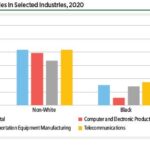
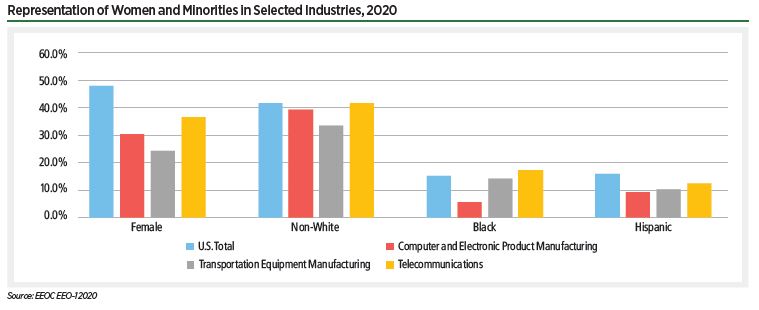
In the U.S. population as a whole, minorities (non-white individuals) make up nearly 42% of the workforce. Similar proportions of minorities are seen in Computer and Electronic Product Manufacturing and Telecommunications.
Representation of Women and Minorities in Selected Industries and Aerospace Companies
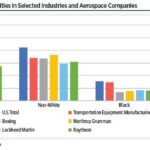
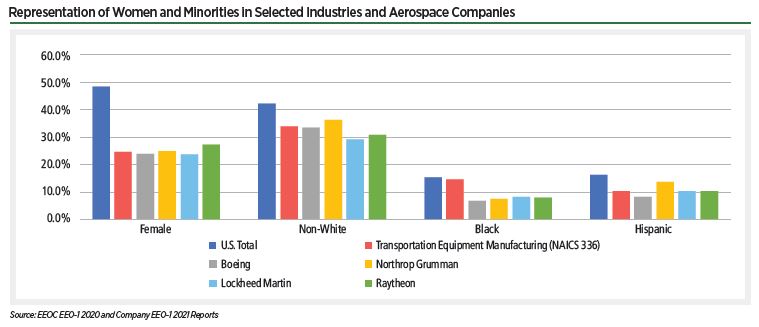
While all U.S. space companies with at least 100 employees (or at least 50 employees if they do work for the government) are required to collect information on diversity and report it to the U.S. government, most do not make this data available to the public. However, four of the largest aerospace contractors — Lockheed Martin, Northrop Grumman, Boeing, and Raytheon — make their EEO-1 reports public.
U.S. Space Industry Employment and U.S. Total Employment Relative to 2011
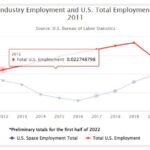
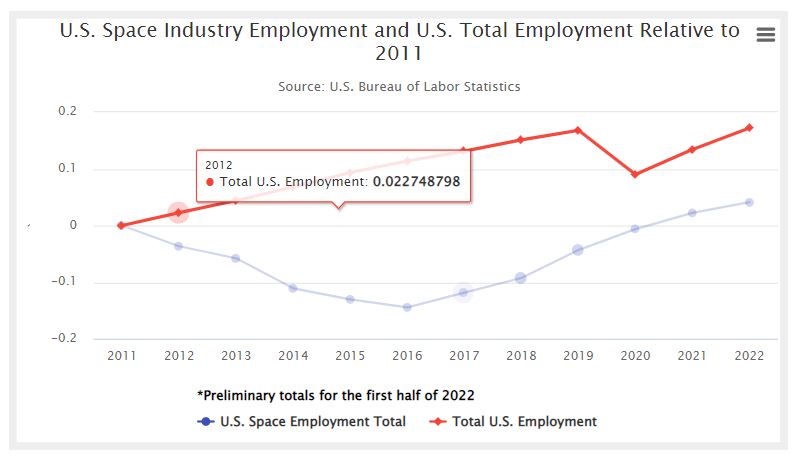
Employment at U.S. private sector space companies grew nearly 2% from 2021 to 2022, reaching 155,973 people in five employment classifications, based on preliminary estimates from the U.S. Bureau of Labor Statistics. This continues a consistent pattern of growth since 2016.
NASA Civil Servant Workforce Age Profiles over Time 1993-2023
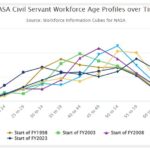
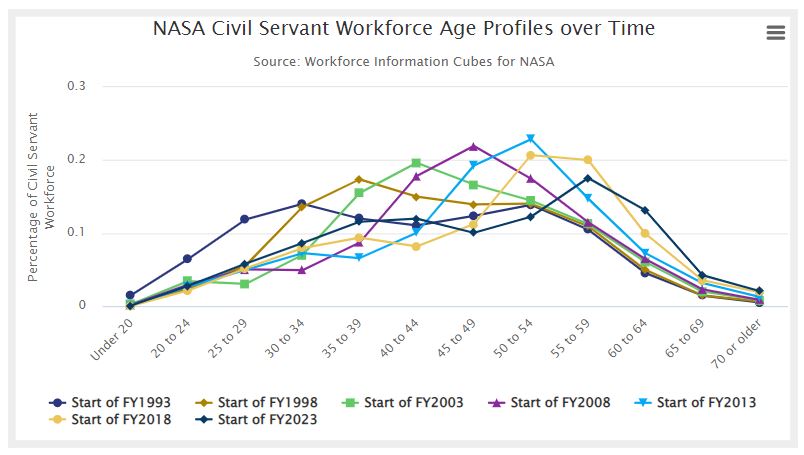
For many years, NASA has been working to manage the aging of its workforce. As of the beginning of FY 2023, 23% of the NASA workforce was eligible for retirement.
U.S. Private Sector Space Industry Employment, 2012-2022
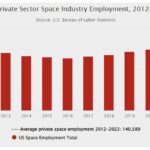
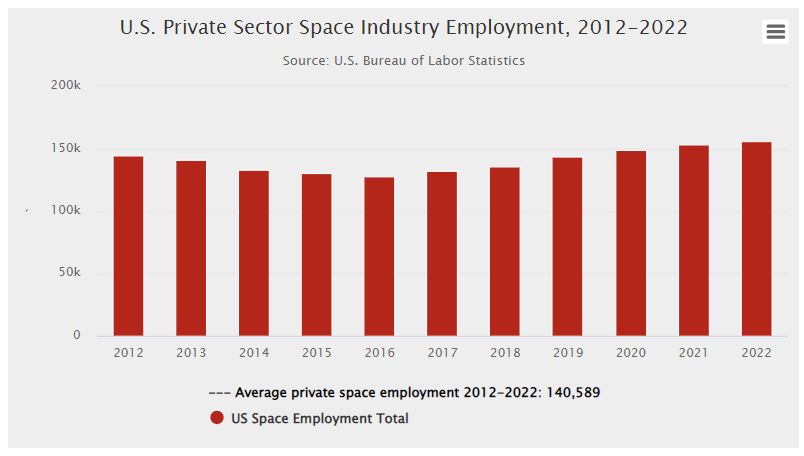
The private space sector has grown more than 18% over the past five years and proved to be resilient to the negative effects on total U.S. employment associated with the COVID-19 pandemic.
Representation of Women and Minorities among Senior Officials and Management Compared to Representation in U.S. Workforce
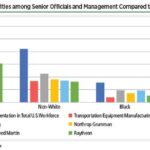
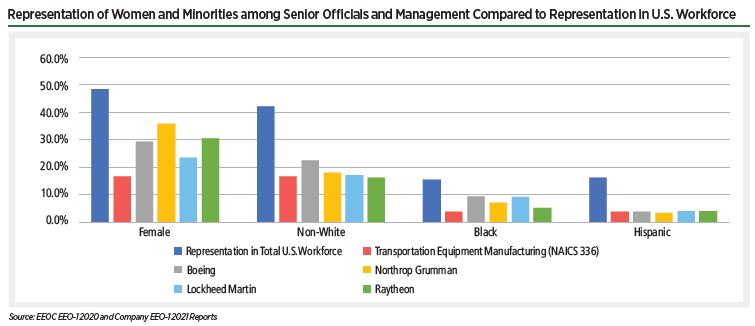
Four of the largest aerospace contractors — Lockheed Martin, Northrop Grumman, Boeing, and Raytheon — make their EEO-1 reports public. Within these companies, the proportion of females and minorities is similar to that seen in the transportation manufacturing sector overall. However, they have significantly fewer Black employees than that sector, on average.
Foreign-Born Individuals in S&E Occupations in The United States, By Level Of Degree and Occupation: 2017
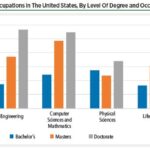
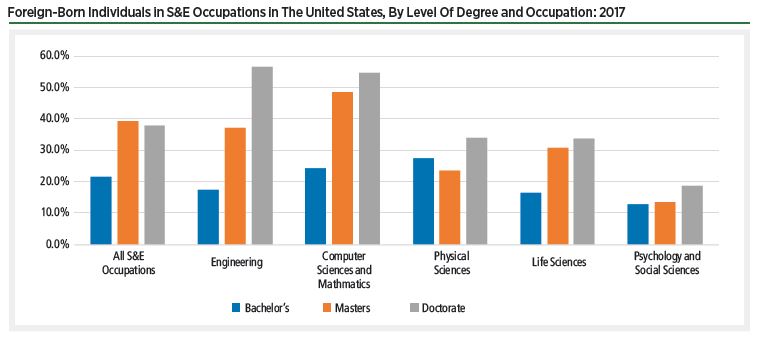
The National Science Foundation in 2020 found that many firms covered shortfalls in science and engineering workers by courting immigrants. More than a third of workers holding doctorate degrees in science and engineering jobs across America were born in another country.
Launch Attempts by Top Operators, 2000-2022
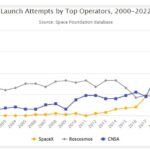
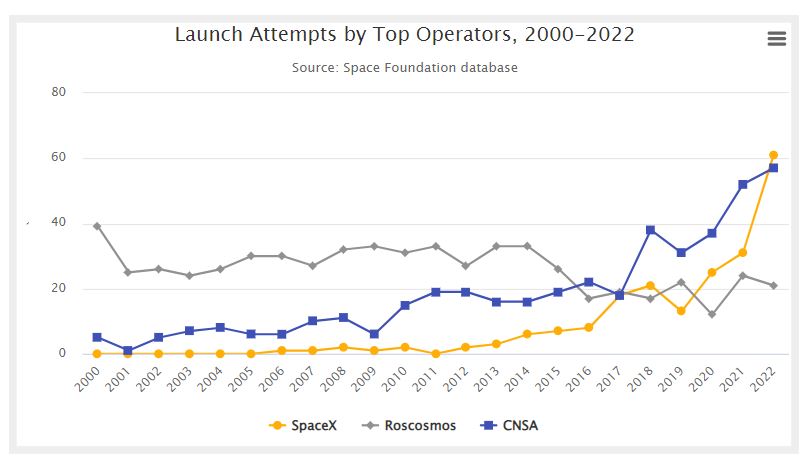
Two of the top three launch operators — CNSA and SpaceX — have contributed to overall launch activity growth by exponentially increasing their pace, while the third — Roscosmos — decreased its annual launches by 42% from 2000 to 2022.
U.S. Aerospace Engineers by Age
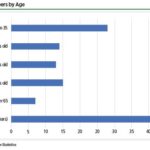
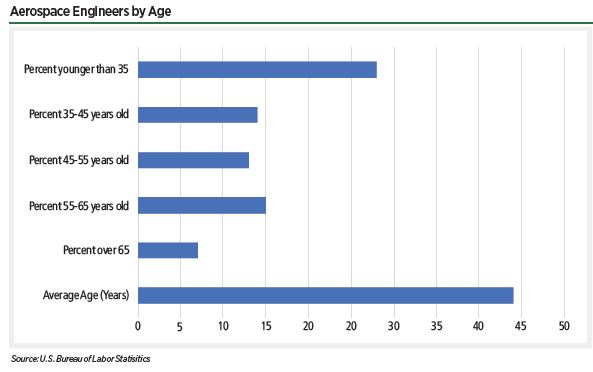
In addition to the current openings, the U.S. Bureau of Labor Statistics expects the need for aerospace engineers possessing at least a bachelor’s degree to grow by 6% through 2031.
U.S. Space Force Enlisted Guardians, 2022
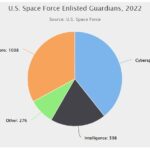
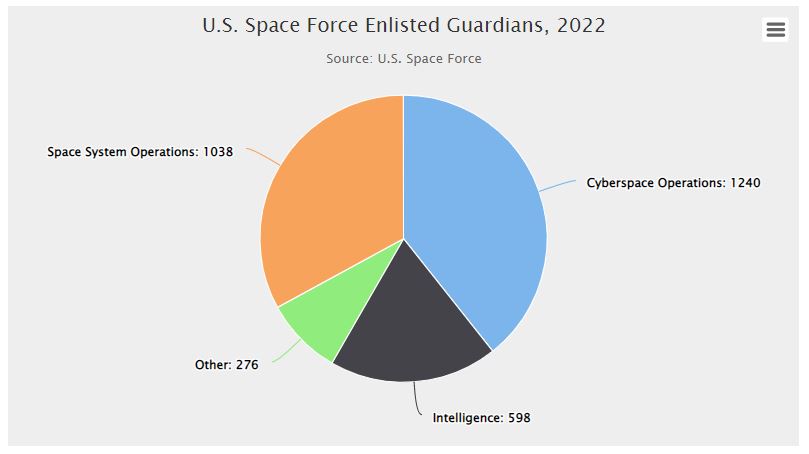
While recruitment has been a challenge across other sections of the military, the Space Force has had more applicants than it could accept. For example, when looking for cyber professionals with private-sector experience, the Space Force received hundreds of applications for six positions.